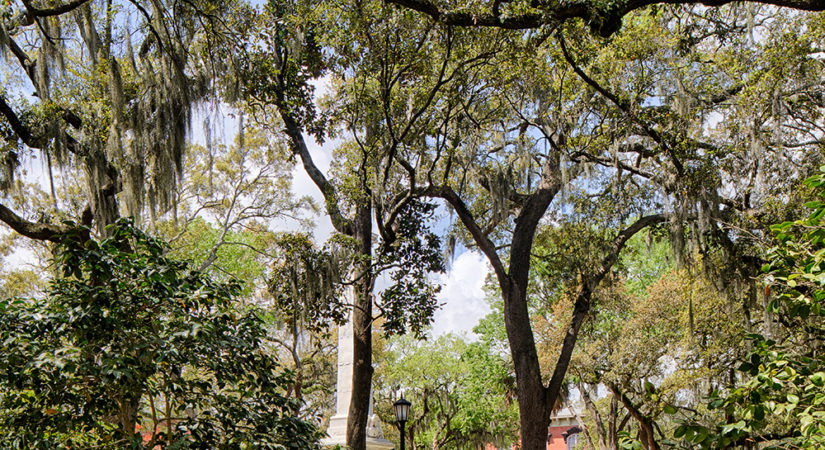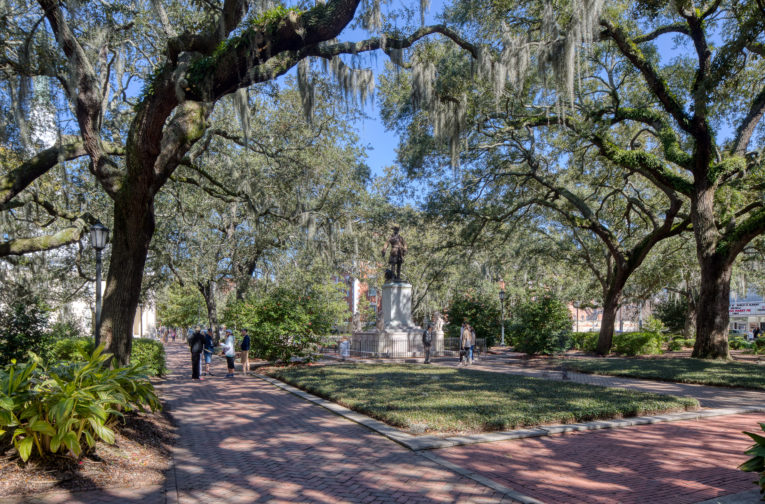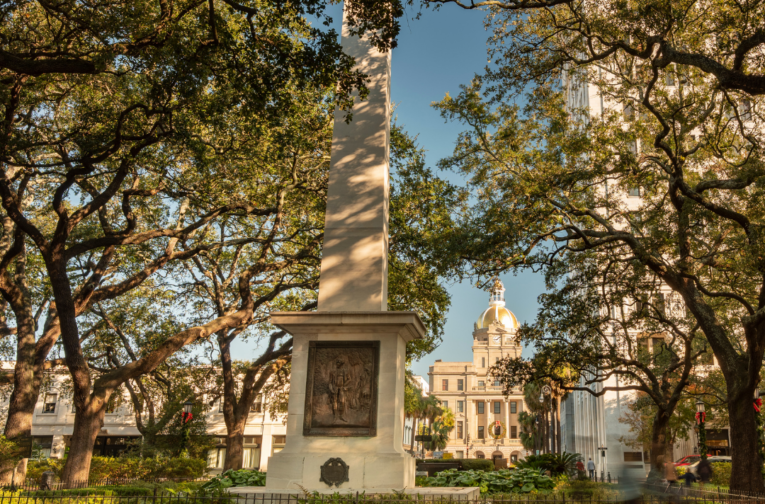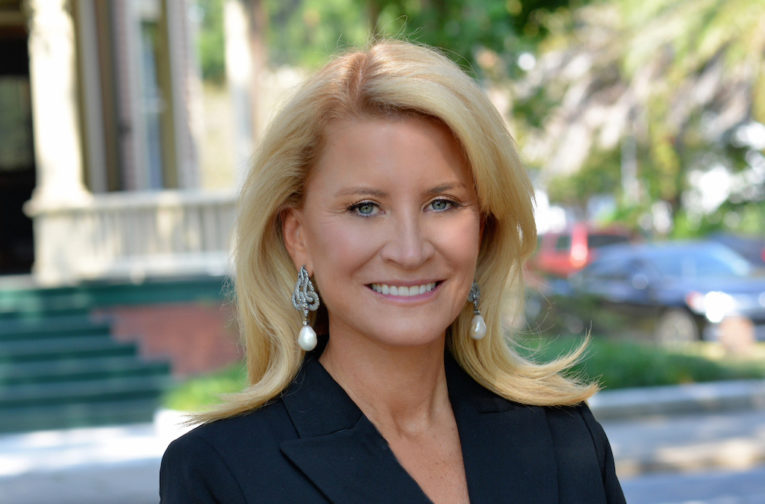Although it isn’t the oldest of Savannah’s squares, Monterey Square is considered by many local residents to be the most picturesque example of General James Edward Oglethorpe’s urban plan with the most interesting stories to tell.
Originally laid out in 1847, the square was named to honor U.S. forces’ pivotal victory at the Battle of Monterrey in the Mexican- American War the year prior. The eccentric spelling of the square’s name, with only one “r,” is just one of its whimsical charms.
A Charismatic Hero The stately stone monument in the center of Monterey Square commemorates a hero not of the Mexican- American War, but of the American Revolution: Count Casimir Pulaski. The Polish noble, impassioned with the cause of independence, came to the colonies at the personal invitation of Benjamin Franklin to help fight the British. After arriving in America, Pulaski wrote to Gen. George Washington that “I came here, where freedom is being defended, to serve it, and to live or die for it.”
A diminutive but dashing figure and a born leader, Pulaski was mortally wounded in 1779 while leading a charge against the British lines holding Savannah. Though the effort to retake the city was unsuccessful, Pulaski’s act of ultimate sacrifice set an example for the fight for freedom that followed.
The Pulaski monument in Monterey Square was unveiled in the 1850s, and quickly became known as one of the most elegant in America. The monument was fully restored in 2001. For years, there was a dispute as to whether the remains laid to rest near the monument were actually Pulaski’s. Recent genetic research has determined that the remains are indeed those of Casimir Pulaski, and that he was possibly intersex or hermaphroditic, meaning he may have been born with both male and female physical characteristics.
After ‘Midnight’ For many visitors to Monterey Square, the most important features aren’t what’s in the square but the buildings surrounding it. The most popular destination is the iconic Mercer Williams House Museum at 429 Bull St., made famous by John Berendt’s now-classic book “Midnight in the Garden of Good and Evil.”
The longtime residence of antiques dealer, raconteur and bon vivant Jim Williams – accused of murdering his lover in the house in 1981 – was built from 1860-69, originally for Hugh Mercer. One reason the house took so long to complete is that Union troops occupying Savannah used some of its construction materials to build their own shelters in Monterey Square. Mercer himself, a Confederate general, never actually lived there, nor did his great-grandson, legendary Savannah- born songwriter Johnny Mercer. Designed by renowned architect John Norris, the Mercer Williams House Museum is now a thriving tourist attraction and is still owned by the Williams family. Several scenes from Clint Eastwood’s movie adaptation of “Midnight” were filmed inside this grand residence, which serves as a testament not only to the enduring allure of the ‘Midnight’ tale but also to the fine collector’s eye of its controversial former owner.
Cultural Diversity Several buildings overlooking Monterey Square feature some of Savannah’s most ornate and masterful architecture, including the stunning Italianate residence at 3 W. Gordon St., which is the longtime location of Alex Raskin Antiques. The stately townhouse at 12 E. Taylor St. is home to V & J Duncan, another iconic Savannah business, dealing in historic prints, lithographs, photos and books.
Probably the most historic building on Monterey Square is Congregation Mickve Israel, the third-oldest Jewish congregation in North America. Jewish people were among the first settlers in Savannah and became intrinsic to the city’s success. Most were Sephardic Jews whose ancestors fled persecution in Spain and Portugal and settled in England before crossing the Atlantic. The original Torah scrolls brought to Georgia by these settlers are the oldest in North America, and Mickve Israel still uses them on special occasions. The current house of worship at 20 E. Gordon St. was built in 1878 and is a rare example of a Gothic Revival synagogue.
Every Savannah square is unique, offering its own history, charm and residential experience. To purchase oneof- a-kind properties on Savannah’s squares, be sure to work with a real estate professional with a deep understanding of the city’s National Historic Landmark District.
Staci Donegan is an associate broker at Seabolt Real Estate who provides highly professional, strategic solutions for buyers and sellers throughout the Savannah area. She can be reached at staci@stacidonegan. com or 912-247-2052.






